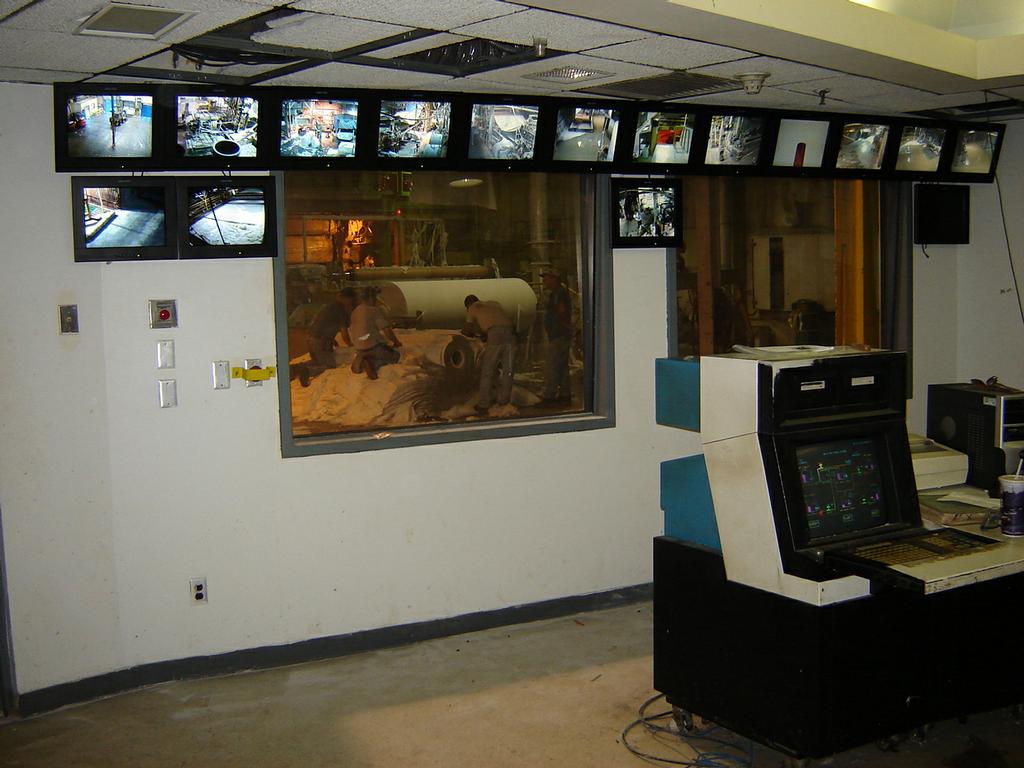Today's networked panopticon represents a postmodern, decentralized authority. There is no longer a central tower of surveillance nor designated areas for the surveilled, but a network of electronic eyes which look over us at all times. Someone may or may not be actually watching, but the possibility remains. One person can monitor literally unlimited cameras, using a CCTV system. A company can watch over millions of square feet of property, both residential and commercial, remotely through the use of sensors, cameras, and personal identification devices.
Though actual security systems do actually watch us, fake security devices, silmulacra of an actual quasi-physical panopticon, such as the Brinks or ADT Home Security Signs, take the principle one step further. these signs are available directly from Brinks Security, and there is no need to buy the actual service; For around 40 dollars, you can get 2 official Brinks signs to stick in your landscaping and 8 window stickers. They are surprisingly not shipped from a counterfeiter in China. It is a system of implication, in leiu of actual security. There is a vast array of these objects, designed to simulate the protection of a satellite security agent. Dummy cameras, surveillance warning signs, and strange bubbles with blinking red lights suggest that one is being policed. The Police use signs such as "This roadway monitored by aircraft surveillance" and radar carts which announce your speed to let you know you may or may not be in a speed trap. It is an implied architecture, an constructed system which cannot be seen, but is omnipresent. You see physicality of the signs, but the architectural dream exists in our minds.
The contemporary panopticon is almost completely dematerialized. Though it is very cloudy, the National Security Agency or Murdoch's News Corp. illustrate this. Quickly evolving non-physical spaces are monitored virtually and without a trace. But we are aware that our every internet move could possibly be recorded.
The security sign, in Barthesian terms, works "because it has both sexes of sight." The sign is exemplifies the dual nature of seeing (in this case the physical sign) and being seen (by the implied surveillance system.) The sign sees because it is mythically linked to Brinks, which is hidden behind the meaning of the sign. The pure signifier, the words on the sign, and the signified, the associations we make from our own experiences and understandings of Brinks, transforms this utterly useless sign into an armiture of power. The overwhelming myth of the private security corporation provides power through associative meaning. It is a new form of panopticon, created by manipulation via mythology.
Barthes states that architecture is always dream and function. The small monument, the security sign, has a powerful dream associated with it, and thus functions as a metaphorical fortification, an invisible barrier created by the very person whom it exerts power, much like Bentham's panopticon. The house is transformed into an imagined fortress, with the possibility of a system of sensors, alarms, and networked communications devices. The dream is created by the security sign, much like the Eiffel Tower transforms the Parisian landscape in to a New Romantic Nature. The object acts as a lens to distort alter our sense of reality. It creates a new perception.
Is there a home security company monitoring that house? The sign in the flowers suggests that there is.




1 comment:
Webcam monitoring doesn't require fancy cameras. Instead your old, unused webcams can be put to good use, by setting them up as security cameras. There are a bunch of webcam software options like GotoCamera available online, that will help you use their service for this purpose.
Post a Comment